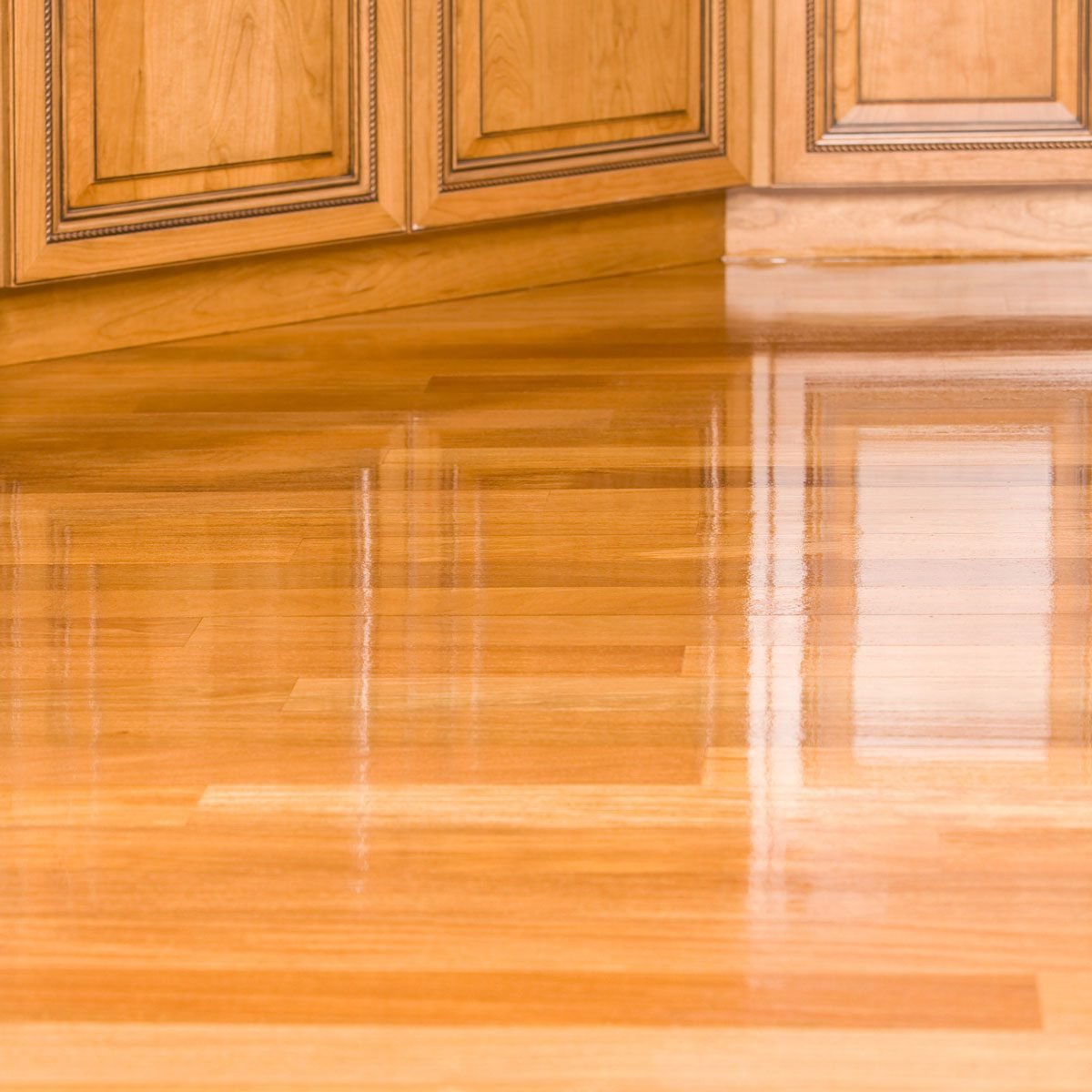To wax or not to wax? Find out whether your floor needs waxing or another type of treatment for keeping it clean and shiny.

Why You Should (or Shouldn’t) Wax the Floors in Your Home

Once upon a time, household solid flooring consisted of three options: wood, vinyl or ceramic tile. And the standard method of treating and maintaining these flooring types was with floor wax and lots of elbow grease. Early floor wax came in paste form and had to be applied the hard way — on hands and knees, rubbing it into the floor and then buffing to a lustrous finish.
Although paste floor wax is still available, today’s homeowners have a lot more options for giving their floors a shine. And lots of modern flooring actually shouldn’t be waxed. Let’s take a closer look at whether your solid-surface floor needs waxing.
On This Page
What Is Floor Wax?
Historically, floor wax was made from organic ingredients like beeswax and carnauba wax, or linseed and other plant-based oils. While some flooring experts still prefer these natural waxes, synthetic substitutes are now more popular, in part because they’re mostly sold in liquid form and are faster and easier to work with. Called floor finish or floor polish, they’re really not waxes at all but acrylic-based polymers, usually applied with a mop or microfiber pad.
Which Floors Need Waxing?
Here’s a look at which types of flooring need to be waxed, and how often.
Hardwood, including parquet. All hardwood floors, whether made from new or recycled wood, or even vintage floors that have been in place a century or more, need periodic waxing. Floor wax helps seal the porous wood surface, protects it from stains, hides scratches and dents and increases shine. Frequency: Every six to 18 months, depending on traffic and wear.
Terra-cotta. Terra-cotta and other unglazed floor tiles are typically treated with sealer and wax right after they’re installed. This brings out their color variations, adds a shiny or matte finish and protects them from stains. The wax needs to be stripped, the tiles cleaned and the wax reapplied periodically. Frequency: Every one to two years.
Vinyl composition tile (VCT). Unlike other vinyl tiles that come with a factory finish, VCT needs waxing right after it’s installed. After that, it needs to be stripped and re-waxed periodically. Frequency: Every six to 12 months.
Floors That Shouldn’t Be Waxed
You might be surprised that the list of floors that shouldn’t be waxed is much longer than the list of those that should.
Engineered hardwood. A lot of modern hardwood floors are sold as engineered hardwood planks, composed of a thin layer of hardwood bonded over plywood. They already come with an acrylic factory finish. Use the flooring manufacturer’s approved floor cleaner with a damp mop, and don’t saturate the floor with water.
Wood laminate. Laminate wood floors are made from a particleboard base with a photo-like layer bonded to the surface. Like engineered hardwood, laminates have a factory finish and will not absorb wax. Clean them with a spray cleaner made for laminate floors, applied with a microfiber pad or lint-free mop.
Bamboo. Most bamboo flooring comes pre-finished and should not be waxed. Instead, clean bamboo floors with a natural product approved for bamboo, like Better Life Natural Floor Cleaner.
Natural stone. Wax and natural stone do not mix. According to The Marble Restoration Company, “wax will not allow your stone to breath and will ultimately need to be stripped from the stone.” Wax will also dull natural stone — probably the opposite of your goal. Clean instead with a product suitable for porous stone surfaces, and reseal it periodically with a natural stone sealer.
LVT. Luxury vinyl tile (LVT) has an impermeable finish that will not absorb wax, so waxing LVT will lead to dullness and product build-up. Instead, use an easy-to-apply polish suitable for LVT flooring.
Ceramic tile. Glazed ceramic tile has an impermeable surface that will not absorb wax. Instead, about once a year, use a sealer to protect the grout as much as anything else.
Floor Waxing Tips
- For hardwood floors, the old wax must be stripped with mineral spirits before a new layer is applied.
- Paste waxes must be applied by hand with cheesecloth or a soft cotton cloth.
- Liquid waxes can be applied with a sponge mop or mop stick fitted with a microfiber pad.
- Stone sealer can be applied with a paintbrush or paint roller.
- Acrylic floor finish can be applied with a sponge mop or a mop fitted with a microfiber pad.



















